Text
The Devil’s Candy (2017) Review
[SPOILER WARNING: this review goes into very specific plot and thematic details, but does not reveal the story’s biggest moments.]
The Devil’s Candy has a pretty classic setup: Jesse Hellman (Ethan Embry, Cheap Thrills) and his family move into a rural Texas home with a grim past and are soon haunted by something sinister. Astrid (Shiri Appleby, UnREAL), Jesse’s wife, is reluctant about the move upon hearing that the home’s previous owners died in the house, but Jesse, a struggling artist, is too happy with the plus-sized studio space to turn it down. As Jesse becomes possessed by an unseen, demonic force which causes him to paint disturbing art, the family crosses paths by Ray Smilie (Pruitt Taylor Vince, Identity), the son of the former owners who—unbeknownst to the authorities and the Hellmans—murdered his elderly parents.
Ray is a slovenly, disturbed man possessed by the same force as Jesse. He plays devilish riffs on his red Gibson Flying V at concert volumes to drown out the satanic chanting he hears in his head at all times. The characterization of Ray through sound and visuals is a good example of Byrne’s excellent directorial touches. You get a sense of Ray’s isolation through his interactions with other people; he can barely hear others over the din of the Devil’s voice (which is utterly terrifying as depicted here). There are numerous shots of Ray distorted through glass (a fishbowl, a red cross on a door) that allude to his warped perception—or maybe that something more formless and evil shares his silhouette. Though Ray is a repeated child murderer, Vince’s performance conveys Ray’s vulnerability, childlike innocence, and struggle against doing the Devil’s bidding.
Jesse is a great foil to Ray—he’s a chiseled but sensitive metalhead who puts family above everything else, including his career, which is why he’s painting butterflies on commission for a bank when we first meet him. His daughter Zooey (Kiara Glasco, Maps to the Stars), who shares her father’s love of metal, jokes that butterflies aren’t very “metal,” but Jesse does whatever’s necessary to support and protect his family. That willingness carries Jesse throughout the film, almost leading him into his own deal with the Devil. Jesse is disturbed by the artwork he creates while possessed, but mounting financial pressures force him to consider it as a means to an end, even as his painting begins to interfere with his fatherly duties and drive a wedge between Zooey and himself. Embry pulls off the machismo and free-spirited earnestness of Jesse, flying off the handle during confrontations with Ray, but sincere and even deferential as he apologizes to Zooey for neglecting to pick her up from school. The unique relationship between Jesse and Zooey—sometimes more friend than father—is at the center of the film and moments like the two of them banging their heads in unison to metal songs or Jesse throwing up devil horns as he drops her off to school ground the movie emotionally.
This surprising dramatic heft amplifies the film’s tension and many scares by making you care about these characters. However, upon closer examination of the story’s events and insinuations, things get messy. It’s a haunted house movie, where new residents are terrorized by former occupants and a house’s grim history (in this case, a living person in addition to something supernatural). It’s a possession movie, but both the protagonist and antagonist are possessed and their possessions manifest in wildly different outcomes despite originating from the same source. There’s also elements of a serial killer movie in the mix. In addition to serving those narrative threads, there’s the aforementioned subplot regarding Jesse’s deal with the Devil, which broadens the film’s thematic scope but provides little payoff. It’s a really interesting blend of ideas, but it leads the film in too many different directions that it ultimately abandons. Katie Rife from The AV Club mentioned in her review that when the film screened at festivals in 2015, it was 10 minutes longer, some of which further explored “the relationship between creativity and demonic possession.” I honestly think an additional 10 minutes (or maybe even 15 or 20) could make a huge difference by tying together the film’s various threads into something more cohesive.
It’s difficult not to think of films like The Shining and The Amityville Horror when watching The Devil’s Candy, as both feature hauntings and possessions that aren’t fully explained (as well as numerous specific plot details). But while The Shining is widely considered one of the best horror films of all time due to being so subtle and open to interpretation (as evidenced by Room 237), the opacity of The Devil’s Candy distracts from the film’s other successes. It gestures towards ideas too explicitly at times and not explicitly enough at others. It’s too specific for a more abstract reading—both Jesse and Ray hear the exact same chanting (often at the exact same moment), and Jesse becomes possessed only after moving into Ray’s old house—and yet it fails to connect dots it clearly lays out. Byrne draws direct parallels between Ray’s child-murdering and Jesse’s dead kid paintings through skillful cross-cutting and montage, but I left the film unsure of what the connection meant.
Are we to believe that Jesse, on a long enough timeline, might eventually murder children? Did Ray start by channeling Satan through sick guitar solos and progress to murdering children? Should we think murdering children and creating disturbing art are equivalent? Is—as the fictional religious TV program featured repeatedly throughout the movie posits—the devil just everywhere, using anyone with a shred of evil as his instrument? Or is Ray just a crazy person who justifies his murders with otherworldly rationale and Jesse just a painter who found a muse that might be driving him insane? I don’t think any of these are particularly satisfying conclusions—and the last one is pretty problematic—but ignoring them and treating the film’s subtext as fodder for a simple story about a family under supernatural siege does a disservice to Byrne’s craft and meticulous visual (and sound) direction.
The Devil’s Candy has a lot to love. It features strong performances from its leads, an admirable emphasis on character and family, some truly creepy and uncomfortable sequences, and, most notably, excellent visual direction. Byrne’s style and attention to detail are impeccable and he loads the film with great shots and imagery that begs for a deeper semiotic analysis. Byrne even manages to make a film that embodies the spirit of metal without devolving into parody. The Devil’s Candy appeals to me in very specific ways, and yet I can’t help but feel like something’s missing. The film builds spectacularly, but makes a mad dash for the finale right when things are heating up. Instead of leaving blanks for the audience to fill in, the movie’s various narrative threads feel like dead ends surrounding an otherwise good story. The Devil’s Candy is a movie that I appreciate for its craftsmanship and human story, but not a movie I love. I hope to find something different when I inevitably revisit it in a couple of years.
0 notes
Text
XX (2017) Review
XX is an anthology horror film written and directed solely by women and featuring women in all the lead roles. It’s the first of its kind, created as a direct response to the lack of opportunities for women to direct horror films. I think the political context of this particular film is important to acknowledge, but at its core, XX is just a good horror anthology. Each of its segments plays like an episode of The Twilight Zone or Tales from the Crypt with a distinctly female perspective. Female-led (and directed) horror films are not new, but few are truly interested in exploring women’s experiences, which is part of what makes XX special.
The first segment is “The Box,” adapted from a Jack Ketchum short story and directed by Jovanka Vuckovic. In it, Natalie Brown (Channel Zero, The Strain) struggles to understand why her son has stopped eating following an incident on the train with a stranger and his mysterious wrapped gift. Vuckovic, whose previous credits include a number of horror shorts, directs with skill and confidence, infusing a mundane setting with sinister dread. The segment’s aesthetic—immaculate domesticity—contrasts sharply with the protagonist’s struggle to fit the mold of a traditional mother or connect with her family. The story is perfectly self-contained, always teasing out the mystery but never revealing more than necessary.
“The Birthday Party” is the directorial debut of Annie Clark, better known as the musician St. Vincent. Melanie Lynskey (Heavenly Creatures, Togetherness) plays an overwhelmed mother struggling to ensure her daughter’s birthday party goes off without a hitch. Clark’s segment is about the horror of anxiety and how anxiety can turn a bad situation into a catastrophic one. Lynskey gives a hell of a performance, juggling grief, paranoia, forced geniality and, finally, exhaustion. It’s not scary in the traditional sense—and actually leans more towards black comedy—but Clark does a great job conveying the anxiety, and resulting fear, experienced by the protagonist. There are a number of tense scenes that are ratcheted up by the great score, which Clark also composed.
The third segment is by horror anthology veteran Roxanne Benjamin, who made her directorial debut with a great short in last year’s Southbound. “Don’t Fall” opens with a foreboding bang—an ever-widening shot of a group of young adults on an expedition in the desert that pulls out further and further until the title card overlays it and the characters are dwarfed by the ominous imperative. The group discovers an ancient cave painting depicting an evil creature, which eventually takes form and attacks the group. This is the most straightforward of the segments and feels like a classic creature feature setup. My major complaint with Benjamin’s segment, which is not much of a real complaint, is that I wish it was a full-length feature instead of a short. It has a great setup, likeable characters, and a solid creature design, but it feels as though it ends just as its getting started.
The final segment is Karyn Kusama’s (The Invitation, Jennifer’s Body) “Her Only Living Son.” Single mother Cora (Christina Kirk) is struggling to raise her angry, seemingly sociopathic teenager, Andy, whose eighteenth birthday is only a day away. Andy physically harms animals and classmates, but the principal of his school makes excuses for his behavior, going so far as to punish his victims instead. As Andy begins to transform into something monstrous and a sinister conspiracy takes shape, Cora is forced to face her son and what he’s becoming. Kusama’s more adult, character-focused brand of horror carries over from The Invitation and feels right at home with this story, which plays out like a 25-minute sequel to another beloved horror film. Kirk (Powerless, Love Is Strange) delivers a nuanced performance as a mother that will do anything to protect her son even if she occasionally fears him or bows to his whims. This story feels especially pointed as it deals with how society often gives a free pass to bad men with a certain level of fame (e.g. movie star, athlete). Some of the dialogue feels like it was ripped right from current media coverage regarding domestic abuse and rape culture. The story ends on a poignant note, flipping expectations and signalling a rejection of traditionally masculine ideas.
The four segments are connected by stop-motion-animated interstitials (created by Sofia Carrillo) involving a walking dollhouse. I was unable to parse any narrative or connections from them, but they’re beautifully crafted and serve as a nice palette cleanser between stories.
Like most anthologies, XX is best taken as a whole. I think the bookends are the strongest segments, but “The Birthday Party” is notable for its black comedy and absurdity (including that Joe Swanberg cameo) and “Don’t Fall” is a fun change of pace from the rest. XX has its scary moments, but if you’re looking for a thrill ride, this is not the movie for you. Instead, it’s more of a slow burn, lacing its 80-minute running time with dread and tension. In a perfect world, we’ll get at least 2 more of these with a different set of female directors each time (like the V/H/S series). Here’s hoping XX makes a big enough splash to make that dream a reality.
0 notes
Text
A Near-Perfect Description Of What Drives Horror Fiction
"Atmosphere, not action, is the great desideratum of weird fiction. Indeed, all that a wonder story can ever be is a vivid picture of a certain type of human mood. The moment it tries to be anything else it becomes cheap, puerile, and unconvincing. Prime emphasis should be given to subtle suggestion—imperceptible hints and touches of selective associative detail which express shadings of moods and build up a vague illusion of the strange reality of the unreal."
- H.P. Lovecraft, "Notes On Writing Weird Fiction"
0 notes
Text
Day 10: Almost Human (2013)
Directed by Joe Begos
Written by Joe Begos
(warning: some minor plot spoilers; I've tried to avoid specifics, but broad plot is outlined)
Almost Human has the unfortunate fate of being the movie I was probably most excited for from this year's crop of new horror films. I heard tell of its John Carpenter leanings and have been in awe of the film's poster since the first time I saw it. What a great fucking poster. The sad reality is that the movie could never compete with whatever vague notions had built up in my head after hearing about its influences and seeing that poster. And also, I didn't find the film particularly good.
From the opening credits, Almost Human does everything in its power to evoke classic Carpenter films. There's a neat 80s retro logo for the production company, the score channels Carpenter's pulsing, electronic style, and Begos even employs the trademark Carpenter font. A more discerning viewer might dismiss this homage as sheer mimicry. As a fellow Carpenter fan, I saw these unsubtle nods as a means to place Begos' film alongside Carpenter's work from the 80s, a heavy-handed but effective way to set the mood. Almost Human is aspirational and you get the sense Begos wants his film to be seen as a well-crafted throwback like Ti West's House of the Devil. Sadly, it is not.
Almost Human opens--on Friday, October 13, 1987--with Seth (Graham Skipper) frantically trying to reach his best friend Mark's house. One of their friends, who should have been with Seth, has been sucked up into the sky by blue lights. Mark (Josh Ethier) is reluctant to believe a hysterical Seth, but after something emits an ear-splitting noise, Mark walks zombie-like out of the house and is swallowed into the sky by blue light.
Two years later, Seth begins having weird dreams and nosebleeds, which you discover he had also been experiencing around the time Mark was taken. Seth visits Jen (Vanessa Leigh), Mark's ex-fiancé, to share his growing suspicion that something related to Mark's disappearance is occurring, but she is reluctant to believe him.
At the same time, Mark does in fact return. He is obviously not himself. In fact, it's as if he's been replaced by a super strong, black-eyed, homicidal alien wearing Mark as a suit. He makes his way across town, in search of Vanessa, Seth, and his old home. Along the way, he brutally murders a number of people, which tips Seth off to his return. The movie wraps up with a violent, chaotic conflict between Mark, Seth, and Jen that is equal parts thrilling and shocking. I also appreciated that the ending was a bit of a downer, rather than trying to resolve things neatly.
Almost Human is a mash up of landmark sci-fi horror films--The Thing, Invasion of the Body Snatchers, Alien, and The Terminator. Though elements have obvious, visible roots in older movies, Almost Human's particular blend of sci-fi horror is interesting. It's a movie about aliens, though we never truly glimpse any. It's aliens as a malevolent force rather than physical entities. The sound they (and Mark) emit is discomforting and perfect for unsettling the audience. I wish I could say the characters and story do the concept justice, but the execution is kinda weak.
The movie is set in the 80s, yet feels like it could easily take place in the present. The script isn't very good. It leans heavy on exposition and lacks strong characterization. I also felt like motivations were sometimes muddy. Acting is pretty stiff, but the leads are okay enough. Josh Ethier turns in the best performance, even though it's as a deadpan alien killer. Mark has a genuinely imposing presence and is quite the murderous badass.
Almost Human feels like a missed opportunity. The story and acting are only executed adequately, but the score is an effective riff on Carptenter and the practical effects are well done. If its story was more developed, the characters and acting were stronger, and the film took longer to build up--it runs a lean 71 minutes to the credits--I could see this being a gem among independent horror movies. As it stands, Almost Human can't overcome the expectations it sets for itself by invoking Carpenter so explicitly.
0 notes
Text
Day 9: Afflicted (2013)
Directed by Derek Lee & Clif Prowse
Written by Derek Lee & Clif Prowse
Afflicted is basically Chronicle, except at a much smaller scale and with vampirism instead of superpowers. This comparison is rhetorically reductive, but it was hard to shake the feeling throughout Afflicted that I had already seen this story play out in Chronicle. There are meant to be a few scares, but the film is more power-fantasy-at-a-cost than horror film, despite its subject matter. The pacing, plotting, and action are similar, but Afflicted lacks the strong characters and emotional resonance of Chronicle.
First time directors Derek Lee and Clif Prowse play a pair of friends--who go by the same name--on a year-long trip around the world. Derek has an AVM, an abnormal connection in the brain between the arteries and veins, and is at risk of dying at any time, so he has decided to see as much of the world as he can in the next year. Clif, his best friend, is going to document their journey as a web series for friends and families to watch.
The beginning of the film takes the form of an overly saccharine and meant-to-be-inspirational documentary about a man overcoming death and taking on the world. This is a move I suspect Lee and Prowse performed to give the film a dramatic arc from cheery to dismal, but it sets up the characters as terrible, narcissistic bro-types. Despite going for pathos, the backgrounds and the setup of the characters make them less relatable. The likability of the characters never really grows over the film, so it's hard to stay invested in the events that transpire.
Derek and Clif stop off in Paris first, and while at a club, Derek encounters a raven-haired woman named Audrey. When Clif and a couple of the pair's friends burst into Derek's room, they find Audrey gone and Derek unconscious and bearing a bite mark. From here, the film moves into the "What's going on?!"* phase, with Derek sick and showing signs of changing into something else. This quickly converts to the "Woah, dude!"* phase, where Derek tests his preternatural abilities, like jumping up the side of a church and running alongside Clif while he's driving a car.
It's during the "What's going on?!" and "Woah, dude!" phases that the film really starts to stretch the limits your willingness to suspend disbelief. I'm willing to overlook a lot of framing problems in found footage, but it seems like Clif would stop sharing these videos with family and friends, as he's obviously turning into a vampire with some dire consequences. If he does, it's never explicitly marked when Clif stops sharing, but meanwhile, his friends and family are witness to Derek's abilities, accidental attacking bystanders, and violent throwing up of blood, among other things.
The last third of the film is significantly different than the first two, but it's not for the better. It puts too much pressure on Lee's bland character, favors action over tense thrills, and constantly reminds you of its annoying found footage frame.
In the film's favor, some of the first person moments of action are thrilling. It's exciting in the way that watching talented urban freerunners vault about with ease is. Lee's powers are grounded enough to not lose perspective and disconnect the wish fulfillment of the audience. The action is sometimes cool, as Derek punches stone and bursts through walls, but it ultimately falls flat.
Lee and Prowse's Afflicted is a very ambitious, very watchable, but very forgettable film. It was made on a shoestring budget of just over $300k, and it does do a lot with very little in terms of effects and action, but I had a very hard time caring about any of the action or characters on screen. It's not a particularly interesting version of the vampire myth, and it elicits few, if any, genuine scares. I'd say people who want a vampire variant of Chronicle may enjoy the flick, but I'd really recommend just watching the latter instead. Or just a different horror film.
*spoken in a surfer stoner slur
0 notes
Text
Day 8: Ravenous (1999)
Day 8: Ravenous (1999)
Directed by Antonia Bird
Written by Ted Griffin
Ravenous is unexpected in all the best ways. It’s another horror movie I’ve had sitting in my queue for years, untouched due to my expectations being misaligned with what the film actually is. I went into Ravenous knowing it featured cannibalism, but I hadn’t anticipated the ways in which it would manifest, which are far more interesting than a campfire story about a party of settlers forced to eat each other.
Ravenous takes place during the Mexican-American War. Captain John Boyd has just returned from battle and been promoted for his bravery in capturing the Mexican command. Boyd--who can't even stand the sight of meat as a result of the horrors witnessed during battle--reveals to his commanding officer that he took the command post by feigning death and being carted in with the other corpses. Seen as a coward, Boyd is sent to Fort Spencer, a remote outpost in the Sierra Nevada mountain range.
As he’s settling into life at Fort Spencer with an interesting group of soldiers, a stranger named F.W. Colqhoun arrives at the camp looking for help. His wagon party got lost and stranded in the mountains and resorted to cannibalism at the behest of the party’s guide, Colonel Ives. Colqhoun enlists the help of Boyd and a number of other men to search for the survivors he left behind when he fled.
I’d like to avoid spoiling too much more, but the movie twists and changes pretty dramatically at about a third of the way through. The second half is an intense physical and psychological game of cat and mouse, mixed in with some allegory and satire.
Ravenous has a lot going for it. The acting is outstanding. David Carlyle, in particular, is something to behold as Calqhoun, with his vulnerability and devious charm. Guy Pearce as Boyd is also a standout, though for different reasons; Pearce does a great job alternating between a sympathetic coward and a man struggling against himself. The rest of the supporting cast are great, but Carlyle and Pearce are the stars.
The movie is gory and grimy and gritty. Everything looks a bit dirty and messed about. It’s a great complement to a movie about the gross act of eating another human. Even shots of (animal) meat in the film are nauseating and disgusting.
Ravenous has a great score. Sometimes it’s used to add levity (i.e. an intense chase scene scored with an upbeat, racing banjo track), sometimes it’s sweet and pastoral, and sometimes it’s chilling and discordant, helping to enhance surreal aspects of the film.
I think my favorite part of the film was its use of myth and allegory. The story of the wendigo—a man who eats the flesh of other men and becomes a demon cursed with hunger for human flesh—is introduced early on and it turns out to be more than red herring. The wendigo is used as a metaphor for a number of things. The cannibal, or wendigo, has no trouble killing (formerly fellow) humans in order to survive and thrive. In much the same way as the U.S. had no trouble killing—or dislocating--anyone in its path towards expansion. The idea that killing is abhorrent becomes clear, though the film is communicating this through cannibalism, which also closely resembles vampirism. It also then makes Boyd, who is seen as a coward, appear instead as an average person who simply hasn't the stomach for brutal violence against other humans.
The wendigo has a particularly great line that encapsulates it as an allegory of Manifest Destiny: “And this country…is seeking to be whole. Stretching out its arms…and consuming all it can. And we merely follow.”
Ravenous is a unique film. It’s a period horror film, a story about cannibalism, a story about westward expansion, and a story about cowardice. It’s a dark film, and sometimes darkly funny. I loved it and highly recommend it.
0 notes
Text
Day 7: The Burning (1981)
(Quick note: I think I've decided not to do full write-ups for movies I've seen before a.k.a. Upper Classmen. Still not sure what the format's going to be, but for tonight, I'm just sharing some interesting things or things I found interesting about the flick. In list form.)
Directed by Tony Maylam
Written by Peter Lawrence an Bob Weinstein
-- A Friday-The-13th-alike featuring a bunch of kids getting slaughtered at summer camp by a vengeful former caretaker who was horribly burned in a prank-gone-wrong
-- Loosely based on upstate New York urban legend of Cropsey, which was a popular tale at summer camps in the 1960s and 1970s
-- Created by The Weinstein Brothers
-- Was major studio Miramax's first film
-- Feature-film debut for Jason Alexander, Fisher Stevens, and Holly Hunter
-- Tom Savini, legendary make-up artist (Dawn of the Dead), turned down Friday The 13th Part 2 to work on the effects for The Burning
-- Adheres closely to 80s slasher formula, but, interestingly, second half takes on form of a survival movie rather than a straightforward slasher
-- Violence feels brutal, but without being gratuitous or over-the-top; kills feel impactful rather than the "fun" sometimes associated with slasher flicks
-- Characters are okay, though they lean heavy on archetypes and many of the dudes are genuine creeps; enough of the group is sympathetic so that you'll end up wanting some folks to die and others to stay alive
-- Very high body count
-- And at least the stakes feel real even if some of the characters are douchebags
-- Mistook some scenes of dudes stalking as scenes of Cropsy stalking. Maybe intentional comparison via male gazey perspective? Maybe it's just that most of the dudes and Cropsy are creeps?
-- Cropsy's make-up is fittingly hideous and grotesque and his death is super gory
-- Great pulsing, electronic score
-- Water canoe fight with upbeat banjo track!
-- Lots of awkward boner humor...
-- ...but when the kids go off in search of wood, no one makes the obvious wood/boner joke.
-- That shot when a dude's fingers get chopped off!
-- Recommended for people who love 80s slasher movies
0 notes
Text
Day 6: Haunt (2013)
Directed by Mac Carter
Written by Andrew Barrer
Stop me if you've heard this one before:
Family moves into new house, which happens to be the site of gruesome tragedy. Family has had rough time but are poised to reconnect with a new beginning. Son meets and falls in love with neighborhood girl. Family experiences minor ghost hauntings. Youngest daughter seemingly befriends ghost. Son and girl investigate mystery surrounding gruesome tragedy, which intensifies hauntings to dangerous degree. Climax.
I don't generally enjoy being reductive, but Haunt hasn't left me with much. The movie is cut straight from "Ghost Stories 101," with very little to differentiate it from the pack. Horror movies are particularly prone to formula and repetition, but many make themselves stand apart with some hook, great writing, likable characters, or just being particularly effective.
Take, for instance, last year's The Conjuring, which, if we're being honest, primarily trades in the latter two (though it was certainly no slouch in the writing department). It was very straightforward but so well executed that no one could shut up about it.
Meanwhile, Haunt settles for being average across the board. Evan and Sam are both okay enough leads to spend 86 minutes with, but I wouldn't go so far as to call them compelling. The rest of the family is mostly absent except at a couple key points, and they're forgettable besides the parents being surprisingly accepting of their son having random, strange girls stay the night--which I found admirable*.
Some of the ghost designs are genuinely creepy, but the moments of haunting are few and far between and not all that intense. I was surprised at just how slight some of the movie's scares were. Even the climax feels a bit too much like just another scare rather than the final one.
Competent is the word I keep coming back to when I think about Haunt. Conservative might be a good one to add to the discussion. Haunt doesn't fumble or make any egregious mistakes, but it also fails to move the needle much. It doesn't contribute to the cultural zeitgeist of ghost stores--not that every movie has to--and it fails to counter its adherence to trope with any great, or even effective, storytelling. I'll give credit where it's due: the movie ends differently than a slew of other movies of this ilk--and it is decidedly unhappy--but it still barely manages to qualify as something of note.
0 notes
Text
Day 5: Pumpkinhead (1988)
Directed by Stan Winston
Written by Mark Patrick Carducci and Gary Gerani
Pumpkinhead was never really on my radar. I'm still not sure how it ended up on my radar, besides being mentioned by some people I follow on Twitter. But I decided it was something I would try to check out this year. Now looking back, there's the double-whammy of interest inspired by Scream Factory releasing a collector's edition blu-ray and realizing it was directed by special effects master Stan Winston. I also have a particular fondness for 80s horror movies, especially those that are of the cheesy or campy variety, so this ultimately seemed right up my alley.
I'm still not too sure how I feel about Pumpkinhead. It didn't do anything particularly offensive, but it also failed to capture my interest beyond an academic appreciation of its parts.
(Warning: plot spoilers)
Pumpkinhead blends together two kinds of horror stories: a revenge flick and a creature feature. Lance Henricksen--the man with the deepest, craziest, awesomest smile lines--plays Ed Harley, a humble storekeeper and sweet-natured father. Harley's idyllic country life is disrupted by a bunch of city kids, who kill Harley's son in a (you guessed it) motorbike accident. The kids (who look 30 and act 18) run off and leave Harley with his dead son.
Harley decides revenge is a dish best served by Pumpkinhead, and he enlists a local witch to raise the revenge demon (whose wrath Harley witnessed as a child). Pumpkinhead begins dispatching the kids responsible for Harley's son's death--and anyone foolish enough to get in his way--one-by-one. Meanwhile, Harley comes to understand the grave cost for his vengeance: he suffers excruciating pain every time Pumpkinhead kills. Harley decides he must kill Pumpkinhead, partially to save himself, but mostly because this brutal brand of revenge is more than he bargained for.
(end spoilers)
Pumpkinhead bears a lot of resemblance to films of its era, with a group of immature, dumb kids being killed off by some evil being. Most of the dialogue belonging to the kids is silly and will likely make you laugh more than once*. Characters are pretty vapid besides Henriksen, though one girl gets a great moment where she grabs two knives while saying, "Just in case God doesn't show." There are lots of brutal killings, though I would hardly say the film has a sense of fun about its proceedings. Pumpkinhead tends to kill his victims in a mostly uniform manner, which is kind of a disappointment.
Actions are carried out with grim seriousness and, as such, it's hard to enjoy. It's reaching for a "Be careful what you wish for" fable, with this uncontrollable force of nature wreaking more havoc than intended, but Pumpkinhead isn't unleashed to his full extent and it feels like the movie is too serious and at the same time too restrained. Pumpkinhead does feature some great practical effects for its titular monster, but the character doesn't get near enough screen time.
The score is synth-heavy, but also features some spooky choral arrangements and maybe out-of-place twangy guitar & harmonica. It gives the film a distinct, if sometimes inconsistent, vibe. I usually felt like I was watching a horror film, but sometimes the music neared that of a western, which had the effect of pulling me out of the moment. Add to the score copious amounts of fog throughout and you have a movie with a defined moodiness--though I'm not always sure if the movie knows what mood it wants to invoke at any one moment. I do, however, want to point out that the graveyard where Pumpkinhead resides is a beautiful set and almost make watching the movie worth it singlehandedly.
I didn't dislike Pumpkinhead, but I can't say I liked it too much either. Lance Henriksen is a badass, but that's about the strongest feeling I can wring from watching this. It's split between being too serious, yet failing to invoke any true terror. A lot of films of a similar structure overcome this problem with levity, but there's nary a moment of intentional fun to be had.
While I didn't love it, if you dig 80s horror and monster movies, I'd still say it's worth a watch.
*Best line of the movie: "Nah, the cops found, like, her foot or something in this big pot with all these carrots and onions. It was like foot stew."
0 notes
Text
Day 4: Devil's Due (2014)
Directed by Matt Bettinelli-Olpin & Tyler Gillet
Written by Lindsay Devlin
While The Blair Witch Project may have originated the found footage film as we know it, few can argue that Paranormal Activity--and its many sequels--are not responsible for the subgenre's current popularity. While a number of films have used the found footage technique to produce surprising results (Troll Hunter, Chronicle, V/H/S), many are content to ape the formula set forth by Paranormal Activity in an attempt to cash in on the subgenre's success. Devil's Due falls pretty firmly in the latter camp.
This is disappointing not because I expected anything from a movie with this pretty generic premise (which my girlfriend informed me is nearly identical to Rosemary's Baby--which I have shamefully not seen), but because the talent involved is at least partially responsible for another successful, quality found footage flick: V/H/S. The directing pair of Bettinelli-Olpin & Gillet are part of the quartet of filmmakers known as Radio Silence, who directed the final segment ("10/31/98") of V/H/S. Oddly enough, there are a number of sequences and scares in Devil's Due that recall that story of a group of friends exploring a haunted house on Halloween. It's all the more frustrating then that Devil's Due, despite a number of decent scares, falls mostly flat.
Zach and Sam have just gotten married when their honeymoon takes a turn for the worst. While in the Dominican Republic, they're drugged and abducted by a cult who seem to be performing a satanic ritual. You can guess from preceding scenes involving a fortune teller, the movie's title or the heavy-handed epigraph that this ritual involves impregnating women with antichrists. Yep, not just one antichrist, but many.
You can pretty much guess the film's trajectory from there. Sam finds out she's pregnant, suffers many complications, and leading up to the save-all-the-best-scares-for-last finale are alternating segments of normal life and moments intended to scare the audience. Some are successful, but many are predictable if you've seen any of the Paranormal Activity movies. Devil's Due feels like a very paint-by-numbers version of the modern found footage film, save for just how bonkers the ending gets--something which I still can't decide whether to give the movie credit for or criticize.
Devil's Due's biggest sins all revolve around the format. The very first scene of the film establishes Zach as having come to embrace video taping every waking second of his life after thinking his dad was a cornball for doing the same. Most found footage films use circumstance to justify the format, and yet Devil's Due just decides Zach should be a hokey dude who thinks his son or daughter is going to want to see all this raw footage. He's completely obsessed with making sure his future child knows every detail of its parents lives and its conception.
In addition to the (poor) script's weak justification for the format, this is a found footage flick trying hard to seem life-like by allowing us really exciting shots like the waist of a doctor's coat. There are far too many scenes with inessential shots layered over with dialogue. Later in the film, cameras are installed in Zach and Sam's house by the cult and because they're meant to be hidden cameras, they are of low-quality, which is reflected with perfect facsimile by the film. In a major studio-released found footage flick, which has little pretensions for the format beyond producing scares, I'd rather they just break immersion and make those cameras HD so we don't have to stare at fuzzy, crummy scenes.
By the climax, I was ready for the movie to end. The writing is not good; the two leads--Zach especially--are grating and hard to root for; and while the scares taken individually are mostly effective, the movie lacks any real sense of dread. Devil's Due is a great reminder of why I still seek big studio found footage flicks out, and why few of them remain with me beyond their run time: they work great as cinematic haunted houses--lots of jump scares and scary things getting right in your face--but they have little value to add to the horror genre. They are fun but forgettable. They trade almost entirely in the cheap-but-effective jump scare. I may clinch up in the moment, but movies like this rarely linger after they're over or give me much cause to lose sleep.
I didn't hate my time with this movie--though I was frequently annoyed--but it did little to earn any praise or remembrance. Unless, like me, you feel compelled to see every big found footage flick, I'd say this is one to skip.
0 notes
Text
Horror, According To Heart Shaped Box
"Horror was rooted in sympathy, after all, in understanding what it would be like to suffer the worst."
- Joe Hill, Heart Shaped Box
0 notes
Text
Day 3: Resolution (2012)
Directed by Justin Benson & Aaron Moorhead
Written by Justin Benson
Resolution is a horror flick I’ve had sitting in my Netflix queue for the better part of a year. Though word-of-mouth praise gained it my attention, something about the premise of a guy keeping his friend hostage in a desolate cabin to help him overcome serious drug addiction didn’t inspire many thoughts I associate with horror movies. I’m generally a sucker for stories about drug addicts, but—and this is more fault of mine than the movie’s—there didn’t seem to be an obvious hook.
Much to my surprise (and delight), Resolution is anything but ordinary. Mike receives a video of his (estranged) best friend, Chris, who has retreated to a cabin to smoke crack and fire off guns with abandon. The video, along with a map of Chris’ location, were e-mailed to Mike by Chris in an apparent cry for help. The following day, Mike shows up to the cabin and handcuffs Chris in an attempt to make him get clean cold turkey.
From there, the premise evolves pretty quickly. Mike has a number of strange encounters with bizarre locals, many of whom are unhappy with him and Chris staying at the cabin. But Mike is determined to give Chris a fighting chance so he takes whatever action is necessary to ensure they are left alone for a week. Mike also begins discovering various artifacts near the cabin—some old photos, a record containing mysterious conversation, a journal, a film reel. Local tensions begin to rise as the mystery builds, and weirder and weirder events transpire, pulling Mike and Chris into something much bigger than their personal struggle.
I’m trying to avoid specifics again because this is yet another flick that is best served seen with as little known info as possible. There is an obvious influence by David Lynch—to the film’s benefit—and it smartly taps into similar meta-level discussions of horror as films like Cabin In The Woods and Sinister.
Resolution is whip smart. It’s well-written and exceptionally acted. The two leads are fantastic and their sincere friendship grounds the increasingly inexplicable events. Both men are flawed, and by the end, they’ve each undergone tangible growth.
Resolution is also masterfully directed. Benson and Moorhead show uncanny confidence for a couple of first time directors. The movie is deeply unsettling. There are shots that linger without reason, shots that seem to serve no purpose, but they’re used in a way that builds the tension. Add to that the out-of-place and uncomfortable sounds that accompany many of these shots, which results in a constant sense of unease. Numerous shots give the sense that Mike & Chris are being watched, and it is uncomfortable sharing the perspective of whatever has its eyes set on them.
Resolution is a great film and a great horror film. It is cerebral and unsettling. It’s ending doesn’t provide concrete answers, instead opting to let the audience fill in the blanks. And it does so without leaving the viewing feeling slighted. It operates at the level of myth and is all the stronger for it. I can’t recommend it enough.
0 notes
Text
Day 2: Absentia (2011)
Directed by Mike Flanagan
Written by Mike Flanagan
Absentia is the first feature film from Mike Flanagan, who directed this year's haunted mirror flick, Oculus. It is a movie I admittedly avoided for a long time due to its horrible cover art. They say you can't judge a book by its cover, but I think sometimes you can judge a low-budget horror flick for its trying-too-hard marketing materials.
That said, Absentia is nothing like it's cover art: it's not flashy or campy and I'd say it's not even hokey. In fact, one of the movie's biggest strengths is its restraint and willingness to take its time.
Absentia revolves around two sisters trying to overcome their demons. Tricia is still dealing with the fallout from her husband's mysterious disappearance seven years prior. The film begins on Tricia putting up the last of the Missing posters she has left. She's also pregnant, in the process of acquiring her husband's death certificate (after finally being declared dead in absentia), and overwhelmed with guilt about finally letting him go. The stress of her circumstances has brought on haunting nightmares and visions of her lost husband. At the same time, Tricia's sister, Callie, has come to stay with Tricia after roaming the country for years and ending up in rehab for drug addiction.
At the heart of the film is an ominous tunnel near Tricia's apartment, where many people are said to have disappeared. Callie witnesses a number of strange incidents in or involving the tunnel, and this builds to the story's central mystery. It doesn't quite pay off as the end is a bit of a letdown, with too many threads leading to a nebulous conclusion. It feels in line with the movie's theme of a lack of closure, but it doesn't feel as intentional as it had just set up a number of threads which just don't pay off.
While Tricia's situation is more complicated and more directly the crux of events, Callie is our lead. Both she and Tricia are well-written and well-acted, as is most of the cast, though I wouldn't ever say the writing or acting are exceptional. But for a horror movie of this scale, I was more than impressed with the writing and acting. The movie even features some non-linear storytelling that is handled better--and is more effective--than many Hollywood flicks.
Absentia isn't going to scare your pants off, but there are a number of great, spooky scenes with disturbing imagery. The music is particularly effective and Flanagan manages to do a lot with very little. The film also does a great job mingling terrifying manifestations of guilt with the supernatural, to the point where it is almost indistinguishable.
I wish events and characters' arcs had came together better at the end, but Absentia is a noble first effort from a promising director and well worth a watch.
0 notes
Text
Kirk Hamilton on Horror
"Horror is a slithering, shadowy thing. It exists in your imagination. It’s a thing that arrives in the heat of the moment but that you laugh about afterward. It resists standing still and allowing itself to be studied and understood, so it can be challenging to talk about why something is scary, and what makes it work.
Horror, for me, is about two primary emotions: dread, and panic. Something is off, but I don’t know what. It’s too quiet in here. I can just sense it… what was that noise?… That’s dread. Oh god, it’s right here, it’s right beside me but it doesn’t see me yet, what do I do, what do I do, quick think, calm down and THINK… That’s panic. Good horror exists in the balance of those two emotions.”
- Kirk Hamilton from Kotaku’s review of Alien: Isolation
http://kotaku.com/alien-isolation-the-kotaku-review-1641975245
1 note
·
View note
Text
Day 1: The Den (2013)
Directed by Zachary Donohue
Written by Zachary Donohue & Lauren Thompson
The Den starts off innocently enough. Elizabeth receives a grant to study the habits of webcam users on a site called The Den. Her early experiences are a lot like what I imagine a normal night on Chat Roulette is like: a creepy dude who just stares, a pair of creepy dudes asking to see a woman’s boobs, a flopping penis. From there, things descend into a web of stalking, harassment, and murder, witnessed primarily from the perspective of a webcam.
Oh yeah, The Den is a found footage film. I’d say 90% of the film is viewed through a tiny camera atop, or embedded in, a computer or phone. I don’t want to give away many more plot details as some of the effectiveness of the film’s scares rely on not knowing which tense moments are going to pay off**. The perspective—which is almost always a close-up shot of a person’s face from the front—emphasizes tension by having characters’ backs turned away from potential threats, a novel idea for a horror film (and one seen previously in V/H/S). While the contrivance can sometimes be stretched thin, leaving you wondering why someone would still be holding their laptop or phone, it mostly works to the film’s advantage.
It follows the constant rising and falling structure set forth by most found footage films, but it builds quickly and reaches a point of no return for the characters faster than most films of this ilk, which I really enjoyed. Too often, found footage films build slowly and the payoff is too brief. By the end, I was happy to unclench and relax after 80 minutes of watching for threats over someone’s shoulder.
While the movie is far from profound, it touches upon some real world issues through circumstance. The main character is a woman who is harassed in a variety of ways online. There are a few scenes where she is filmed in vulnerable positions without consent. Her sexuality is at one point used to sabotage her career—something that happens frequently on social media sites in the real world. When she reports harassment and other suspicious activity she’s witnessed online, she is ignored by the police.
It isn’t saying anything new, but it’s a good example of the types of threats women face online—and a scary what-if about what happens when those threats materialize in the real world. I don’t want to skew the events of the movie to say only women are targeted, by the way. Men are killed as well, but there is a through line of misogyny in the events that transpire that makes the film worth examining beyond its merits as a scary flick. On the plus side, Elizabeth is a strong female lead who never bows to the pressure of overt and implicit threats. She’s almost too confident at points, putting herself in further danger, but she’s no victim and she’s certainly not helpless.
The movie’s ending is satisfying and the final moments underscore some of the (known and catalogued) dangers of the internet, on which anonymity is used as a weapon. It doesn’t feel like a cautionary tale—though I can imagine something this horrible, but at a smaller scale, occurring in the real world—but it does leave on a note that reminds me of the Hostel films, and also the ways in which even banal acts on the internet have real world consequences.
I really dug the The Den. It was scary and tense throughout, had a strong lead, and felt like it pulled enough substance from the real world to justify its story. I’d recommend it to anyone who enjoys found footage films and anyone looking for a good scare. It’s sometimes brutal, but as Elizabeth’s boyfriend says at one point in the film, “It’s the internet, should have expected something like this.”
**I’m going to include a trailer with each blurb/review—though I often think horror trailers spoil some of a movie’s best scares—but I’d especially advise avoiding the trailer if this movie has piqued your interest at all. It reveals some late developments that are better left unspoiled.
0 notes
Text
Midnite U's Class of 2014
Through an overly complicated process--involving iPhone notes and Excel spreadsheets--I have decided upon the 31 horror films I intend to watch this October.
My goal is to watch all 31, but recognize that through circumstance, I may not be able to hit every single one. I likely won't be watching a movie every single day either--but luckily I'm a fan of double features, marathons, and the like, so I have ways of condensing. Some selections' availability is trickier than others, and if I can't get a hold of one, I'll likely swap it for a different pick. I may also watch more than 31, or simply watch movies outside of the choices. But these are my picks.
I don't think every film here is going to be a winner. October is as much about finding great horror films and revisiting classics as it is about simply exploring all that the horror landscape has to offer. I've culled a list that spans different decades and subgenres, hoping to expose myself to an interesting batch of new and old films. A lot of my choices are dictated by word of mouth, meaning at least someone whose opinion I respect has given it the go ahead. But sometimes all it takes is the involvement of a filmmaker or star whose work I admire.
I've included platforms of availability for each film, should you desire to check them out yourself.
And now...
Meet Midnite University's Class of 2014:
FRESHMEN (never seen, wide release in 2014)

13 Sins (2014)
(Netflix, Blu-ray/DVD)
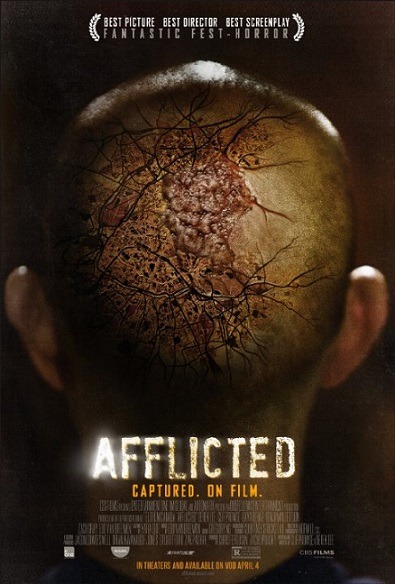
Afflicted (2013)
(VOD, Blu-ray/DVD)

Almost Human (2013)
(Netflix, Blu-ray/DVD)
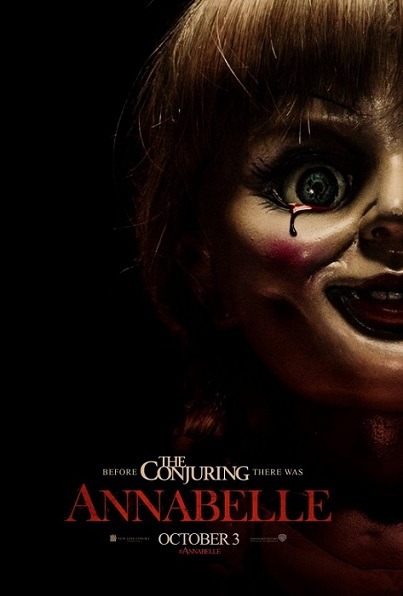
Annabelle (2014)
(Theater - Oct. 3)

The Damned (2013)
(VOD - Available Now)
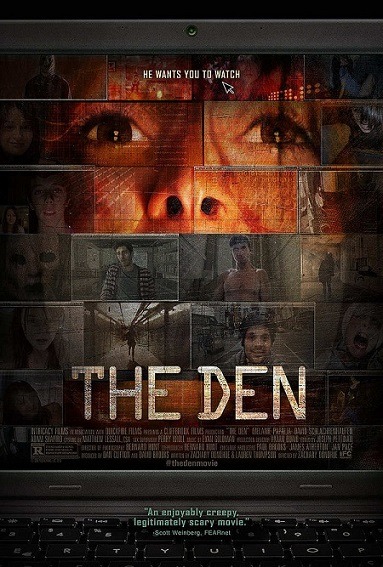
The Den (2013)
(Netflix, Blu-ray/DVD)

Devil's Due (2014)
(VOD, Blu-ray/DVD)

Haunt (2013)
(Netflix, Blu-ray/DVD)

Honeymoon (2014)
(VOD - Available Now)

Ouija (2014)
(Theater - Oct. 24)
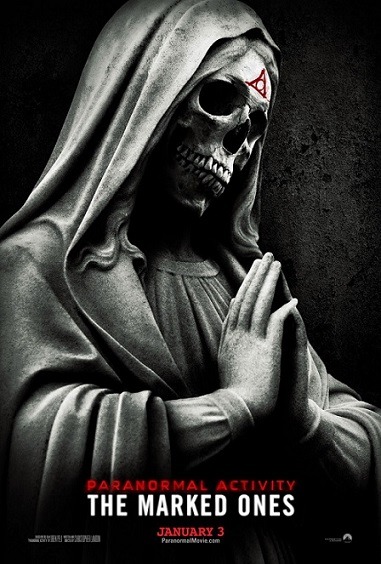
Paranormal Activity: The Marked Ones (2014)
(VOD, Blu-ray/DVD)

The Town That Dreaded Sundown (2014)
(VOD - Oct. 16)

V/H/S Viral (2014)
(VOD - Oct. 23)
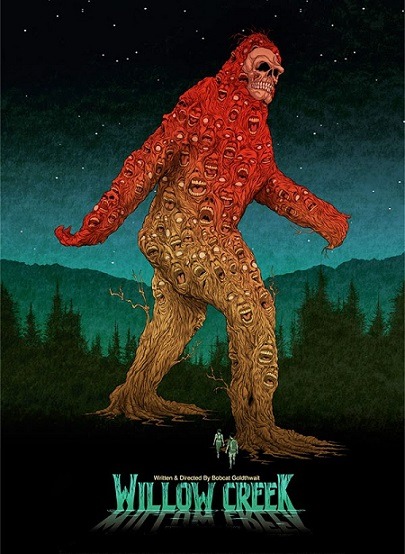
Willow Creek (2013)
(VOD, Blu-ray/DVD)
SOPHOMORES (never seen, released anytime)

Absentia (2011)
(Netflix, Blu-ray/DVD)
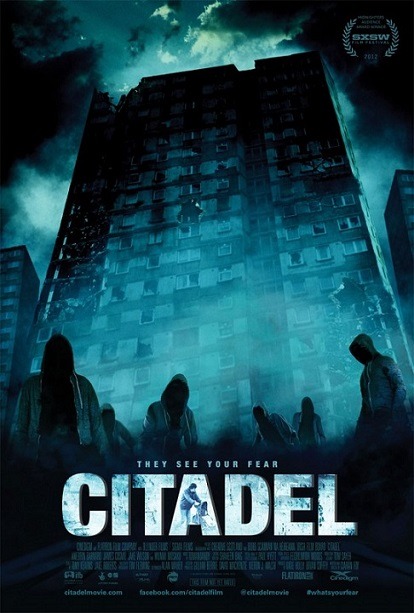
Citadel (2012)
(Netflix, Blu-ray/DVD)

The Descent Part 2 (2009)
(VOD, Blu-ray/DVD)

From Beyond (1986)
(VOD, Blu-ray/DVD)
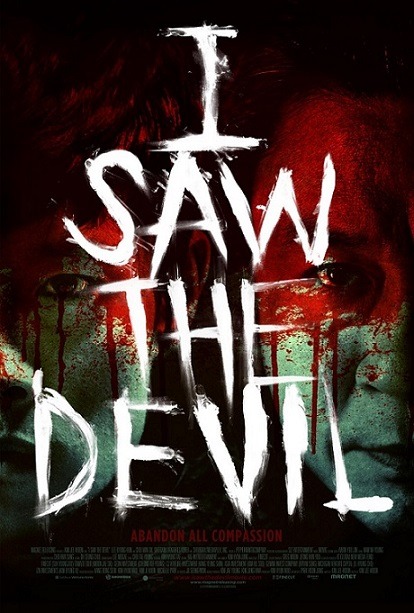
I Saw The Devil (2010)
(Netflix, Blu-ray/DVD)

Pumpkinhead (1988)
(VOD, Blu-ray/DVD)

Ravenous (1999)
(Netflix, Blu-ray/DVD)

Resolution (2012)
(Netflix, Blu-ray/DVD)
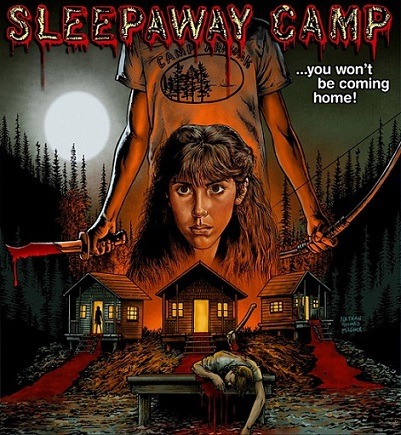
Sleepaway Camp (1983)
(VOD, Blu-ray/DVD)
UPPERCLASSMEN (returning favorites)

The Burning (1981)
(Blu-ray/DVD)

Christine (1983)
(DVD)

The Descent (2005)
(VOD, Blu-ray/DVD)

The Fog (1980)
(VOD, Blu-ray/DVD)

Jennifer's Body (2009)
(VOD, Blu-ray/DVD)
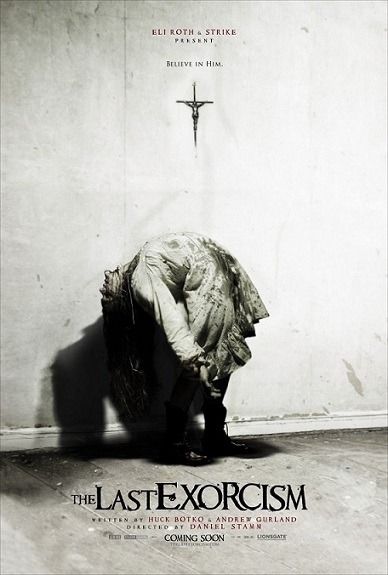
The Last Exorcism (2010)
(VOD, Blu-ray/DVD)

The Lords Of Salem (2012)
(VOD, Blu-ray/DVD)
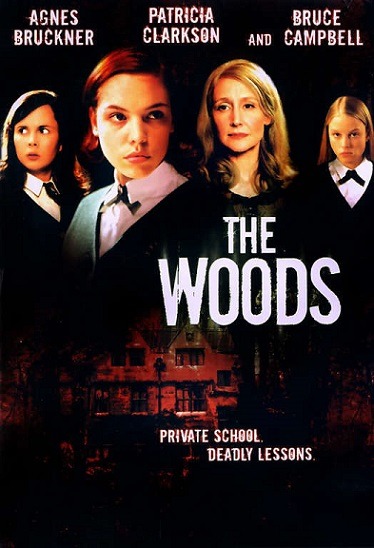
The Woods (2006)
(DVD)
**Quick note about release dates: I have included movies as FRESHMEN despite the release date below the poster stating 2013. I wanted the dates listed with each movie to reflect their release according to IMDB, but my categorization is based on when those movies were truly available to the public, i.e. VOD or Blu-ray/DVD release, which was still this year. Hence their inclusion as FRESHMEN.
0 notes
Text
An Introduction
I was terrified of horror movies as a kid.
My oldest brother would sometimes play the theme from John Carpenter's Halloween and I would run out of the room crying in terror.
I remember the summer when I saw both I Know What You Did Last Summer and Phantoms. I remember a looming dread that hung over me for the entire summer--a black cloud that never dissipated--despite both films being pretty hokey in hindsight.
It took a long time, but eventually I came to love horror. Watching horror films, playing scary games, going to haunted houses; rather than avoiding these activities, I eventually sought them out for thrills. A fearful person by nature, horror became a pleasurable method of exposure therapy, a controlled exercise in which I could face and overcome fear.
Horror also became something over which my brother and I bonded. We'd always watch a ton of movies together, but horror was something special. We started hosting annual horror movie marathon. Over the years, we made it our goal to use that night as a means to discover unseen horror gems, new and old alike.
Now that I've moved from Ohio to Texas and cannot attend our yearly "Night of the Creeps" (named after the 1986 classic), I've decided to start my own tradition. Admittedly, the idea is essentially the same as Shocktoberfest, where many people program their own 31 Days of Horror films in October.
But I've also decided to turn this into a project of sorts--to catalogue and analyze my love of horror. I probably won't write lengthy reviews, but I'd like to use this to start collecting my thoughts on various horror films (and books and games) with the purpose of articulating why this genre captivates me so much.
So stay tuned through October (and beyond!) as I'll be sharing my thoughts on this year's crop of horror flicks.
0 notes